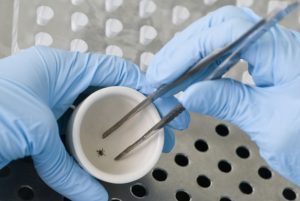
Legislation introduced by U.S. Rep. John Katko (R-NY) targets the growth in tick-related illnesses in a number of states by creating a pilot program that would support tick identification programs and public education.
The Centers for Disease Control and Prevention (CDC) would administer a pilot tick identification program that enables people to submit pictures of ticks they encounter to vector-borne biologists under the Tick Identification Pilot Program Act of 2017. Biologists would then identify the tick species, evaluate the risk of disease and recommend next steps such as medical evaluation or testing of the tick.
Katko introduced the bill on Friday with bipartisan support from U.S. Rep. Sean Patrick Maloney (D-NY) in response to a sharp rise in the number of tick-borne diseases recorded in a number of states, including New York, in recent years. U.S. Reps. Dan Donovan and Elise Stefanik, New York Republicans, both cosponsored the bill.
“With steady increases in cases of tick-borne illnesses, like Lyme disease and Powassan, in central and upstate New York, it is critical that we work to move the ball forward on public health efforts to combat these diseases,” Katko said. “The bipartisan legislation that I’ve introduced with Rep. Maloney will strengthen tick prevention efforts both through education and research.”
Under the pilot program, biologists would also work to educate the public about best practices to avoid encounters with ticks that can lead to tick-borne illnesses and correct what Laura Harrington, the program director of the CDC Northeast Regional Center for Excellence in Vector-borne Diseases, describes as “inaccurate” public perceptions about ticks and Lyme disease.
“This legislation is timely,” Harrington said. “Tick-borne disease threats in New York State are at an all-time high. There is a critical need for more information on expanding tick distributions, as well as the development of new strategies and landscape management for controlling and reducing New York’s exposure to ticks and diseases, such as Lyme disease, babesiosis, Powassan/deer tick virus and other novel tick-borne parasites that are poised to invade our region.”
Jiancheng Huang, the director of public health for Oswego County, New York, said the number of Lyme disease cases in the county have increased from five in 2009 to 106 by mid-2017.
“Our county has worked hard to educate students, parents, the outdoorsman community and the general public about tick-borne illnesses and the best practices to prevent tick bites,” Huang said. “Congressman Katko’s bill will help rural counties like Oswego to strengthen tick-borne illness prevention efforts and aims to curb disease rates.”



